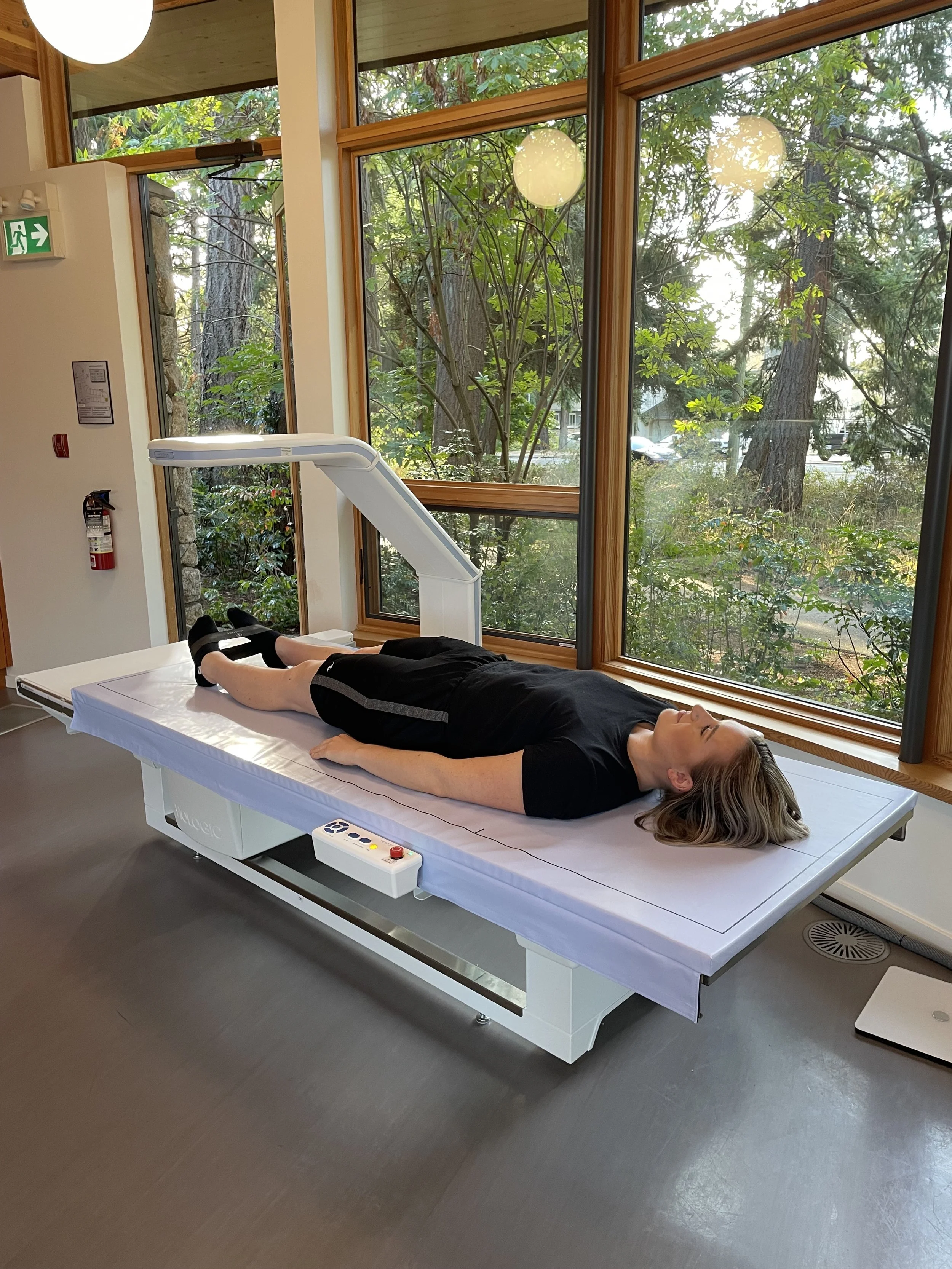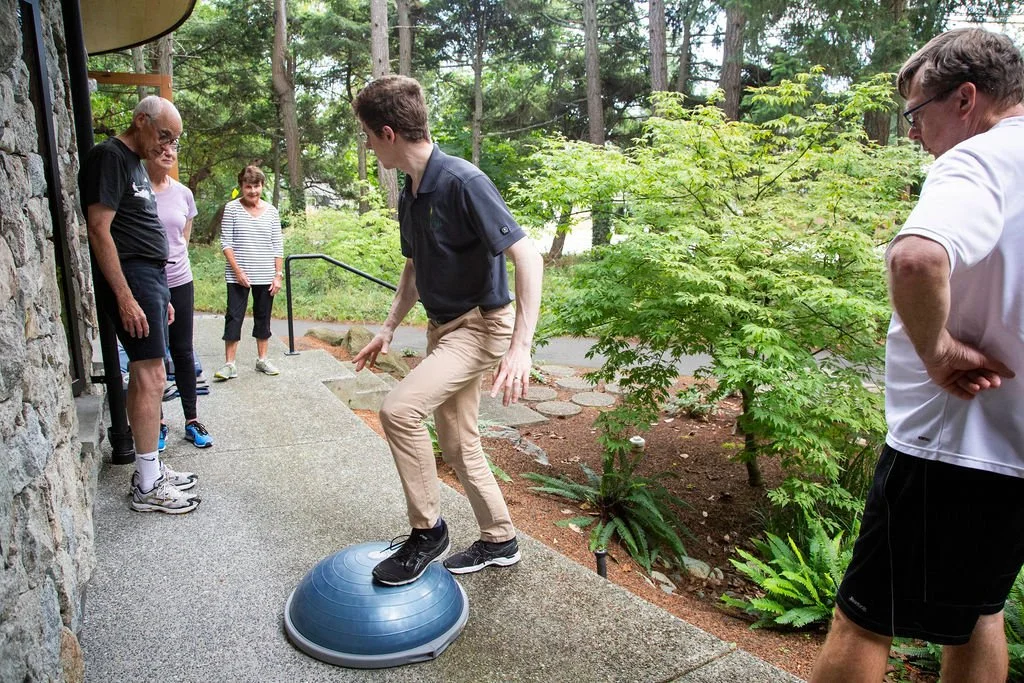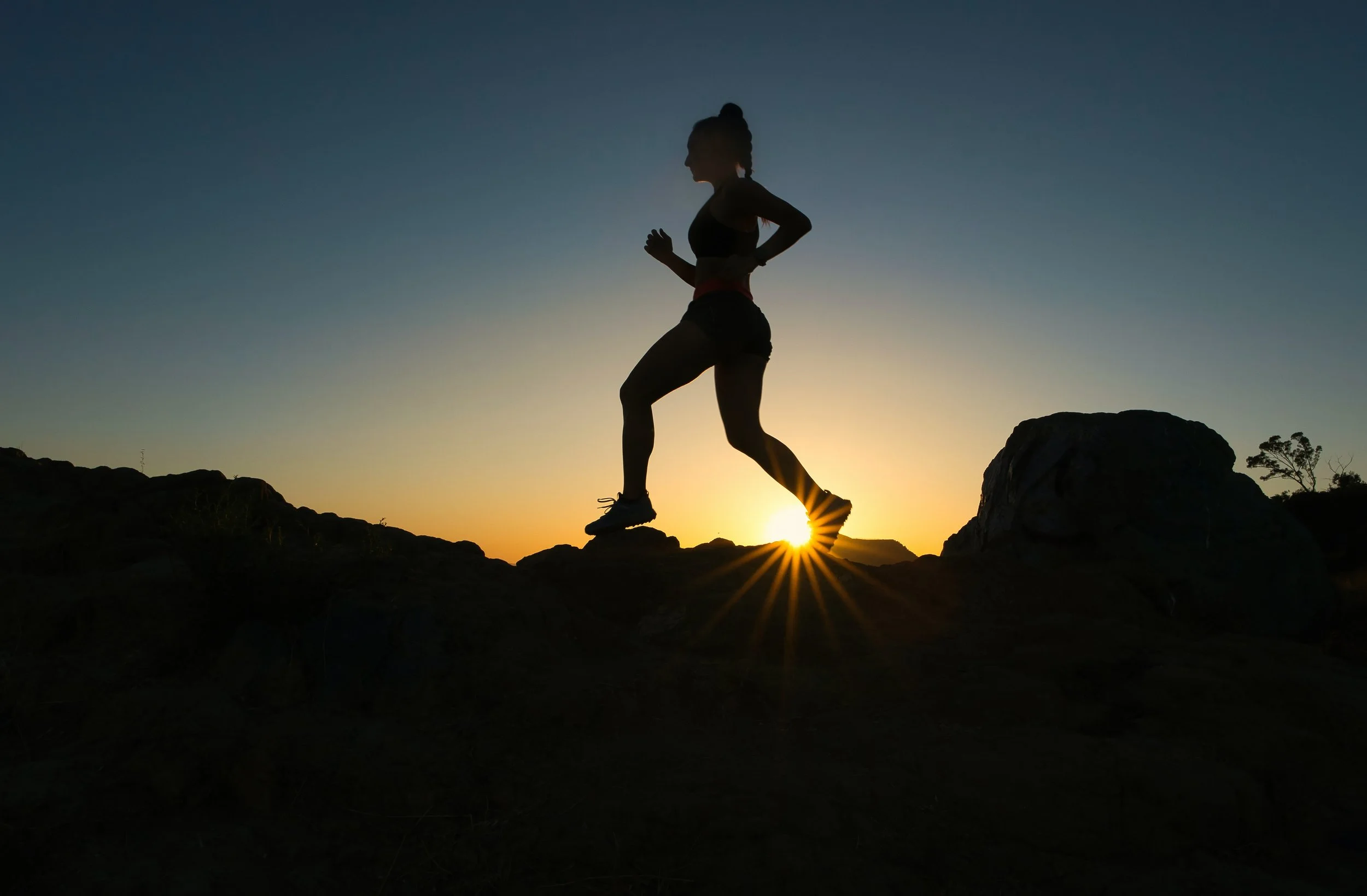Running Tips for Beginners
At least 50% of regular runners get hurt each year. Sometimes it’s from a fall, but it can also be caused by overtraining or improper form.
Refining your running technique will help you:
Run faster
Use energy more efficiently
Increase your stamina
Reduce risk of injury
Seasoned runners already know this, but if you’re just starting out, you’ll want to pay close attention. In this post, we’ll cover the differences between common running habits and some top tips to improve your running technique.
Common Running Habits:
The most frequent running habits associated with injuries are overstriding, hip-drop, and crossover.
Overstriding is when you extend your leg too far forward while running. This impacts the alignment of the knee joint and increases pressure on the patella. This can lead to runner's knee, causing pain around or behind the kneecap.
Pro tip: Aim to land on a slightly bent knee with your foot touching down just a little in front of your hip. Propel yourself from your glutes (butt), rather than pulling from the front of your thighs.
Hip-drop (also referred to as Medial Collapse) happens when your hips tilt too far left or right. If your knees are falling inward when you run, you’re placing more pressure on the knees, tibia, and outside hips. You may also experience pain in your lower back or shin splints as a result.
Pro tip: Focus on running while keeping your pelvis level. We also recommend hip abductor strengthening exercises.
Crossover is when your front foot crosses the midline of your body when it lands. This impacts your tibia—sometimes causing shin splints—your knees, your hips and your lower back.
Pro tip: Try to take smaller steps with your feet a bit wider apart. Increasing your cadence can also help, as can imagining there is an invisible line in the middle of your body that your feet must not cross.
Foot strike determines whether running loads are placed on the calf/foot complex (forefoot) or hip/knee joints (rearfoot). We’ll get into more detail about this further below.
These habits can also be inefficient and lead you to work harder than you have to. Gait retraining may improve running economy (amount of oxygen required to run), leading to improved performance for many runners.
How to Improve Your Running Technique: Expert Tips
Before we get into how to optimize your running form, you should make sure you know how to warm up before a run. A proper warm-up routine helps prepare your body for exercise and can improve performance.
For the best advice on how to improve your running technique, we recommend visiting an experienced physiotherapist for a running assessment.
During this analysis, your movement patterns will be examined while you walk and run. The aim is to see where and how you can improve your running form to manage injury and run more efficiently.
Here are some key areas you can focus on right now, with tips from our experts:
1.Posture
Good running posture is key to avoiding injuries. But it’s only natural for your posture to falter once you start tiring. Here are some top tips to keep good posture while you run:
Look ahead and keep your head aligned with your shoulders
Keep your hands at waist level. Many beginner runners tend to lift their hands too high, causing strain on the shoulders and back
Relax your shoulders and keep them back
2. Foot Strike
Foot strike is how you land on your foot each time you take a step. There are three main types:
Forefoot
You land on the front of your foot, meaning that your heels rarely hit the ground between steps. Your upper body is likely bent forward in this strike pattern, and may cause frequent cramps in your calves. It is, however, effective when going up a steep hill or while sprinting.
Midfoot
The center of your foot lands on the pavement and evenly distributes the impact. It should feel like your weight is balanced over your hips, knees, and ankles.
Rearfoot
This is the most common pattern amongst runners. The back of your foot hits the pavement before your weight transitions to the rest of the foot.
So, which is the right one for you? Well, although studies have shown that the rearfoot strike is the most efficient, the best foot strike is the one that feels most natural to you. In fact, trying to change your striking pattern can create more problems than it fixes. So stick with what feels right and don’t overthink it.
3. Cadence
Cadence is the number of steps you take per minute while running, jogging or walking.
A slower cadence means you spend more time in contact with the ground, which causes more strain on your joints, ligaments and bones. In contrast, a faster cadence is more efficient and reduces stress on your body.
What is the optimal cadence?
180 steps per minute is considered a “good” standard to aim for, but different factors such as height, weight and even footwear can impact your cadence.
How Tall Tree Can Help You Improve Your Running Technique
Our trained physical therapists can provide a specialized physiotherapy evaluation designed to treat and prevent running-related injuries and boost your performance.
Book a Running Assessment at our Vancouver location with Matt Lacasse or Lynita White today.
Whether you’re just getting into running or a seasoned marathoner, you’ll receive expert advice to help you run stronger, safer and more efficiently.
Conclusion
If you often suffer from running injuries, or are trying to prevent them, we encourage you to reflect on your running form, and think about how you could improve your technique.
Here are some more articles that can help you further:
For more health-related information and tips, click here.


































